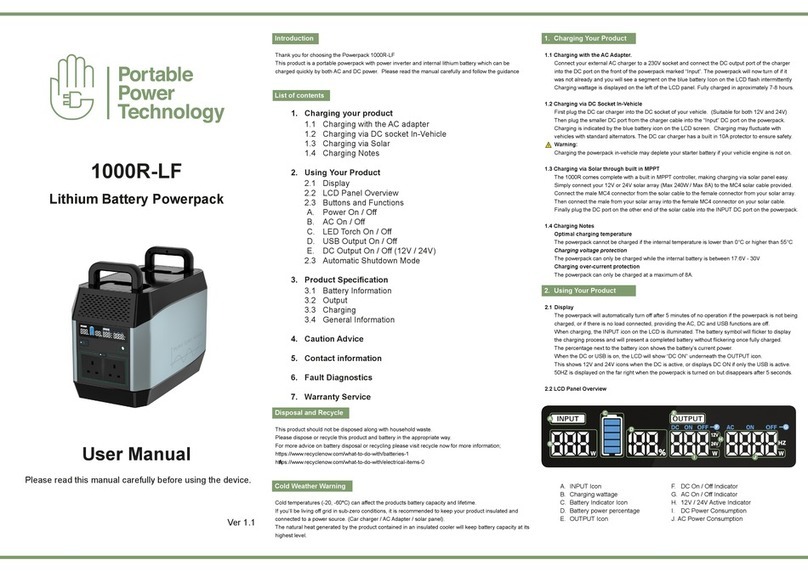9
Charging In-vehicle: (from Alternator)
The Vehicle Power Hub has a highly efficient, fanless and integrated battery to battery charger
allowing for charging of the lithium battery directly from your vehicles’ alternator. The battery to
battery charger (DC-DC) is a sophisticated buck-boost convertor that accepts a wide range input
(12-16V) converting it into a charging profile programmed specifically for this Lithium ion battery
(LiFePo4). Subject to enough alternator current the battery to battery charger can provide 30A
continuous charging current to the internal battery effectively charging it from empty to full in 3
hours, 5.5 hours or 8 hours depending on the Vehicle Power Hub fitted (1300, 2500, 3800)
NOTE : The DC-DC charger is protected with an internal 40A fuse that can be replaced.
Please contact the PPT Team if you suspect this fuse is burnt out or the DC-DC charger
is not working.
The integrated battery to battery charger is compatible with both older conventional alternators
and new variable voltage alternators (EU6) fitted to newer vehicles.
1. For compatibility with variable voltage alternators (EU6) a connection MUST be made to
the IGN labelled port using the supplied cable and connector. This wire should be
terminated to the ignition on the vehicle – if it is not connected the battery to battery
charger will revert back to conventional alternator program resulting in reduced charging.
2. For compatibility with older conventional alternators the IGN labelled port MUST NOT be
connected to ignition
3. Using the supplied input RED/BLACK cable connect the Anderson to the BLUE port
labelled “In Vehicle Charge Input”. The corresponding RED and BLACK other end have
ring terminals.
RED : to allow connection to an in line midi fuse (30A). The other side of the fuse will
require a DC cable terminated to the positive of the starter battery.
BLACK : requires connection to any common ground point (chassis) in the vehicle.




























